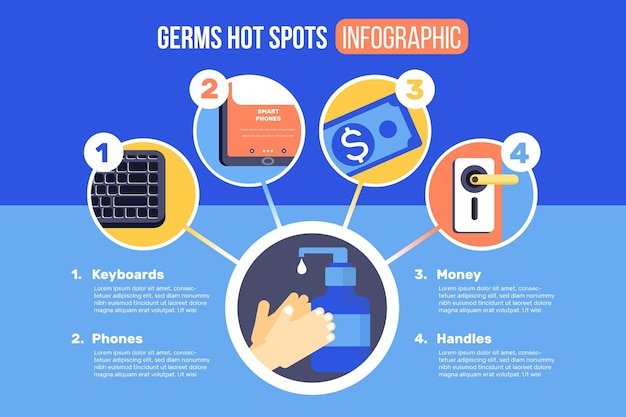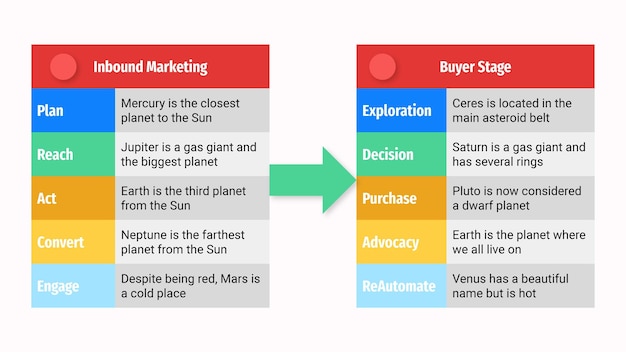Decoding 2025’s US Retirement Account Contribution Limit Changes

Anúncios
Decoding the Latest Changes to US Retirement Account Contribution Limits for 2025 involves understanding adjustments to 401(k), IRA, and other retirement plans, helping individuals optimize their savings and plan effectively for long-term financial security amidst evolving regulations.
Navigating the complexities of retirement planning can feel like a daunting task, especially when regulations and contribution limits seem to change constantly. With decoding the latest changes to US retirement account contribution limits for 2025 on your mind, it’s crucial to stay informed to make the most of your savings potential. Let’s dive into what these changes mean for you and your financial future.
Anúncios
Understanding the Basics of US Retirement Accounts
Before we delve into the specific changes for 2025, let’s establish a foundation by reviewing the most common types of retirement accounts available to US citizens. These accounts are designed to help individuals save and invest for their future, often with tax advantages.
Types of Retirement Accounts
Several types of retirement accounts exist, each with its own rules and benefits. Understanding these differences is essential for choosing the right accounts for your financial goals.
Anúncios
- 401(k) Plans: Typically offered by employers, 401(k) plans allow employees to contribute a portion of their pre-tax salary. Many employers also offer matching contributions, making this an attractive option.
- Individual Retirement Accounts (IRAs): IRAs come in two main forms: Traditional and Roth. Traditional IRAs offer tax-deductible contributions, while Roth IRAs provide tax-free withdrawals in retirement.
- SEP IRAs: Simplified Employee Pension (SEP) IRAs are designed for self-employed individuals and small business owners. Contributions are tax-deductible, and the account grows tax-deferred.
- SIMPLE IRAs: Savings Incentive Match Plan for Employees (SIMPLE) IRAs are another option for small businesses, offering both employee and employer contributions.
Tax Advantages of Retirement Accounts
One of the primary benefits of using retirement accounts is the tax advantages they offer. These advantages can significantly boost your savings over time.
- Tax-Deductible Contributions: Contributions to Traditional IRAs and 401(k)s are often tax-deductible, reducing your current taxable income.
- Tax-Deferred Growth: The money in your retirement accounts grows tax-deferred, meaning you don’t pay taxes on the earnings until you withdraw them in retirement.
- Tax-Free Withdrawals: Roth IRAs offer tax-free withdrawals in retirement, providing a significant advantage for those who anticipate being in a higher tax bracket later in life.

Understanding these basics helps you make informed decisions about where to allocate your savings. Each account type has its own set of rules and benefits, so choosing the right mix can optimize your retirement plan.
Key Changes to 401(k) Contribution Limits for 2025
Employer-sponsored 401(k) plans are a cornerstone of retirement savings for many Americans. Staying abreast of contribution limit changes is crucial for maximizing your savings potential. The 2025 changes bring some notable adjustments that could impact your strategy.
Increased Contribution Limits
One of the most significant updates is the potential increase in the 401(k) contribution limit. The IRS typically adjusts these limits annually to account for inflation. An increased limit means you can save more through your employer-sponsored plan, potentially reducing your current taxable income.
Catch-Up Contributions for Older Workers
For those nearing retirement, catch-up contributions provide an opportunity to boost savings. These contributions allow individuals aged 50 and older to contribute an additional amount above the standard limit. The exact amount for the 2025 catch-up contribution may also see an adjustment.
Impact on Employer Matching
It’s also important to consider how these changes might affect employer matching contributions. Some companies base their match on a percentage of your contributions, up to a certain limit. Understanding how your employer’s matching policy interacts with the new contribution limits is essential for optimizing this benefit.
Keeping these factors in mind allows you to make well-informed decisions about your 401(k) contributions. Regularly reviewing and adjusting your savings strategy based on these changes can significantly enhance your retirement nest egg.
IRA Contribution Limit Updates for 2025
Individual Retirement Accounts (IRAs) offer another avenue for saving for retirement, independent of employer-sponsored plans. The contribution limits for IRAs are also subject to annual adjustments, and 2025 is no exception. Let’s examine the potential changes to IRA contributions and their implications.
Traditional IRA Contribution Limits
Traditional IRAs allow you to make pre-tax contributions, which can provide tax benefits in the present. The contribution limit for Traditional IRAs is typically lower than that of 401(k) plans. Staying informed about any changes to this limit ensures you can take full advantage of this savings option.
Roth IRA Contribution Limits
Roth IRAs offer a different approach, allowing you to make contributions with after-tax dollars but enjoy tax-free withdrawals in retirement. The contribution limit for Roth IRAs is usually the same as for Traditional IRAs. However, there are income limitations to consider.
Income Limitations for Roth IRA Contributions
One crucial aspect of Roth IRAs is the income limitations. If your income exceeds a certain threshold, you may not be eligible to contribute to a Roth IRA. These income limits can change annually, so it’s essential to check the latest figures to ensure your eligibility.
Understanding these IRA contribution limits and income restrictions helps you make strategic decisions about your retirement savings. Whether you opt for a Traditional or Roth IRA, staying current with the latest changes is key to maximizing your benefits.
SEP and SIMPLE IRA Changes in 2025
For self-employed individuals and small business owners, SEP (Simplified Employee Pension) and SIMPLE (Savings Incentive Match Plan for Employees) IRAs are valuable retirement savings tools. Changes to these plans in 2025 can significantly impact your savings strategy, so let’s dive into what you need to know.
SEP IRA Contribution Rules
SEP IRAs allow self-employed individuals and small business owners to contribute a portion of their business profits to a retirement account. The contribution limit for SEP IRAs is typically a percentage of your net self-employment income. It’s important to monitor any adjustments to this percentage and the maximum contribution amount.
SIMPLE IRA Contribution Options
SIMPLE IRAs offer a straightforward way for small businesses to provide retirement benefits to their employees. These plans involve both employee salary deferrals and employer contributions. The contribution limits for both employees and employers can change, impacting the overall benefit of the plan.
Comparing SEP and SIMPLE IRAs
When choosing between a SEP and SIMPLE IRA, several factors come into play, including contribution flexibility and administrative complexity. SEP IRAs generally offer more flexibility in terms of contribution amounts, while SIMPLE IRAs may be easier to administer. Any changes to the rules governing these plans can affect their relative attractiveness.

Staying informed about the evolving rules for SEP and SIMPLE IRAs ensures you can select the most suitable retirement savings plan for your business. Adjusting your contributions and strategies based on these changes can help you and your employees achieve your retirement goals.
Strategies for Maximizing Retirement Savings in 2025
With the latest changes to retirement account contribution limits in mind, it’s time to explore effective strategies for maximizing your savings in 2025. These strategies can help you take full advantage of the available opportunities and secure a comfortable retirement.
Take Advantage of Employer Matching
If your employer offers matching contributions to your 401(k) plan, make sure you contribute enough to receive the full match. This is essentially free money, and it can significantly boost your retirement savings over time. Adjust your contributions to align with the employer’s matching policy.
Increase Contributions Gradually
If you’re not able to max out your retirement account contributions right away, consider increasing them gradually over time. Even small incremental increases can make a big difference in the long run. Aim to increase your contributions by 1% each year until you reach your desired savings level.
Rebalance Your Portfolio Regularly
Asset allocation is a critical component of retirement investing. Regularly rebalancing your portfolio ensures that it aligns with your risk tolerance and investment goals. Consider consulting with a financial advisor to develop a rebalancing strategy that works for you.
By implementing these strategies, you can make the most of the updated retirement account contribution limits and work towards a secure and comfortable retirement. Regularly reviewing and adjusting your approach based on these changes is essential for long-term success.
Planning for Retirement Beyond Contribution Limits
While maximizing retirement account contributions is crucial, it’s also essential to consider other aspects of retirement planning. Building a comprehensive plan that extends beyond contribution limits can help you achieve a more secure and fulfilling retirement.
Diversifying Your Investments
Diversification is key to managing risk in your retirement portfolio. Spreading your investments across different asset classes, industries, and geographic regions can help protect your savings from market volatility. Consider investing in a mix of stocks, bonds, and real estate.
Considering Tax Implications
Taxes play a significant role in retirement planning. Understanding the tax implications of your various retirement accounts and investment strategies can help you minimize your tax burden and maximize your after-tax returns. Consult with a tax advisor to develop a tax-efficient retirement plan.
Estimating Retirement Expenses
Accurately estimating your retirement expenses is crucial for determining how much you need to save. Consider factors such as housing, healthcare, travel, and leisure activities. Use retirement calculators and budgeting tools to get a clear picture of your financial needs.
By addressing these broader aspects of retirement planning, you can create a more robust and resilient plan that ensures your financial security in retirement. Balancing your savings efforts with smart investment strategies and tax planning is the key to long-term success.
| Key Point | Brief Description |
|---|---|
| 💰 Increased 401(k) Limit | Potential rise in the maximum amount you can contribute to your 401(k) in 2025. |
| 👵 Catch-Up Contributions | Those 50+ can contribute extra to retirement accounts. |
| 📊 Roth IRA Income Limits | Watch for changes in income thresholds for Roth IRA eligibility. |
| 💼 SEP & SIMPLE IRAs | Contribution rules for self-employed/small business owners may change. |
Frequently Asked Questions
▼
The exact amount for 2025 will be announced by the IRS, but it’s expected to increase slightly from previous years. Monitor IRS announcements for the updated figure.
▼
Roth IRAs involve after-tax contributions and tax-free withdrawals in retirement, while Traditional IRAs offer pre-tax contributions and taxed withdrawals.
▼
Catch-up contributions allow individuals aged 50 and older to contribute additional amounts to retirement accounts beyond the standard limits.
▼
Yes, income limitations exist for Roth IRA contributions. If your income exceeds a certain threshold, you might not be eligible to contribute.
▼
Take full advantage of employer matching, increase contributions gradually, and rebalance your portfolio regularly to maximize savings.
Conclusion
Staying informed about the latest changes to US retirement account contribution limits for 2025 is essential for effective retirement planning. By understanding these changes and implementing strategic savings approaches, you can optimize your financial future and achieve your retirement goals.